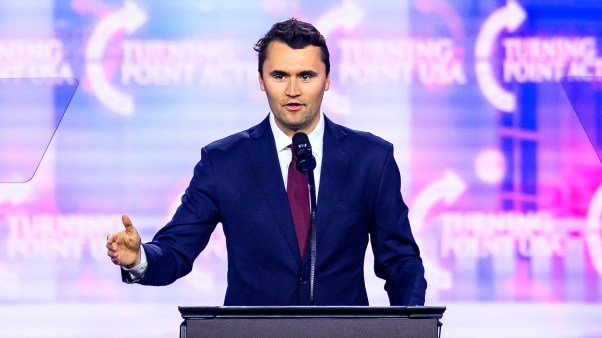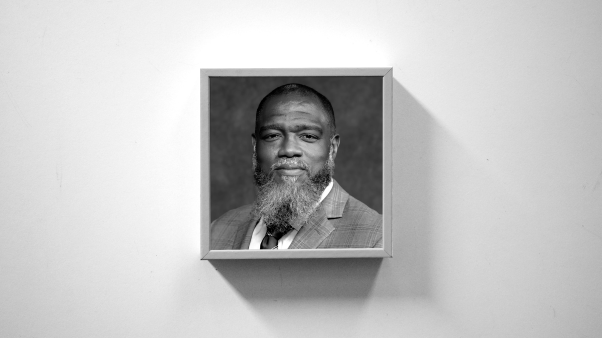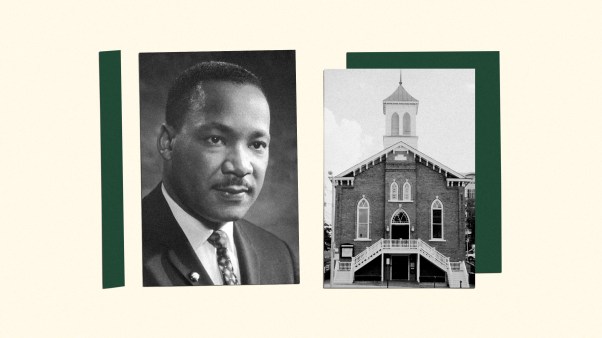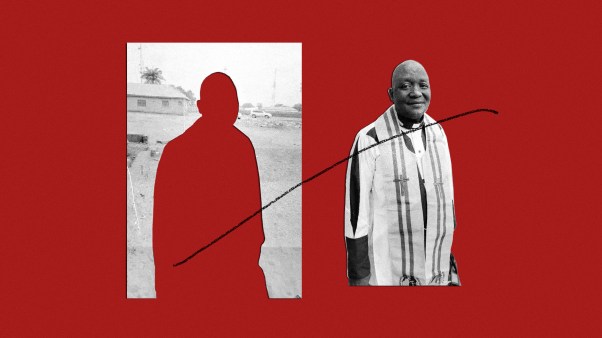Young Muslims yearn for a ‘pure’ society.
The assassination of Egypt’s President Anwar Sadat by a handful of Muslim fundamentalists last month threw the international spotlight on a burgeoning religious movement.
North Americans have been made painfully aware of the Iranian wave of ultraconservative Islam over the last three years but may not have been alerted to the rising tide in Egypt.
No one really knows how many Muslim fundamentalists there are among Egypt’s 43.5 million citizens. Figures such as three million, or 250,000 in Cairo alone, have been tossed about, but they are educated guesswork. Perhaps more significant is the fact that it is overwhelmingly young people who are joining and supporting the groups that call for the restoration of Islamic values. Half of Egypt’s population is under 15 years of age.
History and social organization are probably strong factors behind the current fundamentalist upsurge.
Because Islam is a community more than a personal religion, committed to creating a righteous order for society as a whole, Muslims deeply resent that human control of their destiny was snatched from them by the “Christian” West in the age of imperialism. That sense of humiliation and anger is still a potent force, decades after independence.
The newer Arab regimes have usually monopolized the traditional forms of political discourse: newspapers, radio and television, political parties, and trade unions. That has left the mosque as the sole forum for expressing opposition to a semisecular regime. The rulers may, in effect, have squeezed their people toward religious observance.
The fundamentalist movement’s roots go back half a century. In 1928, a revivalist group of Koran interpreters in the Suez Canal Zone city of Ismailia founded the Muslim Brotherhood, which became a virtual political party under Hasan el Banna, a fiery orator. Soon, Banna was directing anti-British mobs in the canal zone and Cairo. The brotherhood, which almost from the beginning had its own militia known as the “secret apparatus,” worked with Gamal Abdul Nasser to oust the Egyptian monarchy in 1952.
No sooner did Nasser consolidate his hold on power than the brotherhood attempted to assassinate him while he was addressing a crowd in Alexandria. He promptly outlawed the brotherhood and imprisoned tens of thousands of its followers.
Since then, leadership of the movement has passed from the seasoned brotherhood figures into the hands of the bearded, turbaned young men who operate within the Islamic Society.
The Islamic Society is actually a coalition of scores of loosely structured social welfare clubs on Egypt’s 17 university campuses. Originally supported by the government to counterbalance student leftists, the societies have grown and now dominate student life. They perform many services, publishing cheap copies of textbooks that would otherwise be beyond the means of many, giving money or clothing to poor students, and providing Islamic garb at minimal cost for any woman who wishes to wear it.
In 1977, the Islamic Society won almost all the seats in the student union of every university in the country. The same thing happened in 1978. In 1979, the government dissolved the National Student Union, limited the scope of student unions at the universities, and cut off university funds that the Islamic Society had used to operate summer camps, publish magazines, and conduct other activities. However, they are reported to have huge private financial backing, and to be conducting a relentless campaign of indoctrination in poor neighborhoods.
The growing strength of the Muslim ultraconservatives in Egypt—long one of the most secular countries in the Arab world—was first bared during the Cairo bread riots of 1977. Religious zealots did not touch off the rioting, but within hours they were able to take over the mob and direct its anger against nightclubs, bars, and other symbols of “godless” Western civilization.
When Iran’s theocracy burst on the scene early in 1979, it sent shock waves throughout the region, bringing many Muslims back to the mosque, and threatening to turn upside-down the precarious semi-Islamic, semisecular societies of the Arab world.
Leaders of basically secular regimes were quick to be photographed at prayers. Moving against the clergy was considered political suicide.
The Islamic Society was blamed for a sharp increase in religious tension in late 1979 and 1980. Its member groups agitated openly and almost continuously in the universities. In Minya and Asyut in southern Egypt—where the minority Coptic Orthodox Christians are almost as numerous as Muslims—several persons were killed in clashes.
After these incidents, President Sadat changed his public stance, Western diplomats say. In 1979, he spoke out against the Muslim militants. “No politics in religion and no religion in politics,” he said in a speech at Alexandria University. But he balanced this with a May 1980 speech in which he called himself “the Muslim president of a Muslim state.”
Sadat dealt with rising religious fervor by giving Islamic radicals much of what they wanted in the hope of containing them. Meanwhile, he built up security forces and multiplied police surveillance of the more extreme Islamic groups.
Two of Sadat’s recent appointments illustrate the precarious modus vivendi he had struck with the Islamic establishment. Mohammed al Khazali, a leading early member of the Muslim Brotherhood, was made deputy minister in the Ministry of Religious Affairs. Sheikh al Khazali has written about 40 books on Islam that are described by scholars as “straight Muslim Brotherhood doctrine.”
Another ultraconservative, Mussa Shahin Lashin, was elevated to the second highest position in the hierarchy of Al Azhar University, the Islamic world’s most prestigious seat of religious learning. A preacher at a mosque in one of Cairo’s most populous quarters, Sheikh Mussa often criticized Sadat publicly on Islamic issues.
At the same time, Sadat’s government reacted firmly to attempts to stir up trouble. After the 1979 Christmas Eve bombings of churches in Alexandria, at least 100 members of a secret organization called Jihad were arrested. Another clandestine group, the Soldiers of God, was discovered at the same time.
But the most sinister fringe group, Takfir wal Higra (Repentance and Flight [from sin]), was biding its time.
Formed in Asyut by Shukry Mustafa in 1971 and numbering 3,000 to 5,000 members, the group advocates an austere life in movable desert camps with a daily regimen of rigorous prayer, abstinence, and weapons training, and rejects conventional religious authority. It condemned Sadat’s regime as “corrupt and Westernized,” and called on its members to engage in “sacred terror” in order to create a purified Islamic society.
Takfir wal Higra was implicated in an attack by Muslim militants on the Engineering College of the Egyptian Military Academy in 1974. Eleven men were reported killed in that attack. Some of the accused said during their trial that the purpose of the attack was to provide arms that could be used for an assassination attempt on Sadat. One of the men jailed for taking part in the attack was the brother of Lieutenant Khalid Ahmed Shawki el-Istanbuli, the leader of Sadat’s assassins.
Takfir wal Higra was involved in a reported coup attempt in 1975 that got nowhere.
In July 1977, the group kidnapped and killed a respected Muslim dignitary and former minister of religious affairs, Mohammed Hussein el-Dhahabi. The killing resulted in 620 arrests, and those jailed included a number of army officers and enlisted men, according to Al Ahram, the semiofficial newspaper.
President Sadat’s strategy of placating the Islamic establishment to head off a challenge from the movement’s potentially violent fringes was a gamble. But it appeared to him and other Muslim moderates that this year the tide was beginning to turn. He apparently perceived the manifest violence and anarchy of the Islamic Republic of Iran as providing the moment for a counterattack.
At the time of his sweeping September 5 crackdown, Sadat accused the reconstituted Muslim Brotherhood of jeopardizing “the sovereignty and security of this nation,” calling it an “illegitimate” entity that he had erroneously allowed to function. He also criticized the Islamic societies in the universities, calling them threats to “national unity.”
A small demonstration by 50 people in a Cairo mosque on September 18 was brutally broken up by plainclothes policemen carrying whips and Mace.
In one of his last acts in office, Sadat decreed new discipline laws tightening security on campuses, forbidding the presence of firearms, and prescribing severe penalties for student agitators.
On October 6, just two days before the Muslim sacrifice feast, which is observed for four days, Sadat was gunned down as he reviewed a military parade. Sadat had lost his personal gamble to contain the burgeoning Islamic fundamentalist phenomenon. His heir apparent, Hosni Mubarak, was immediately put on notice that he would have to contend with more of the same. With university classes having begun in late September, he was sure to have his hands full.










